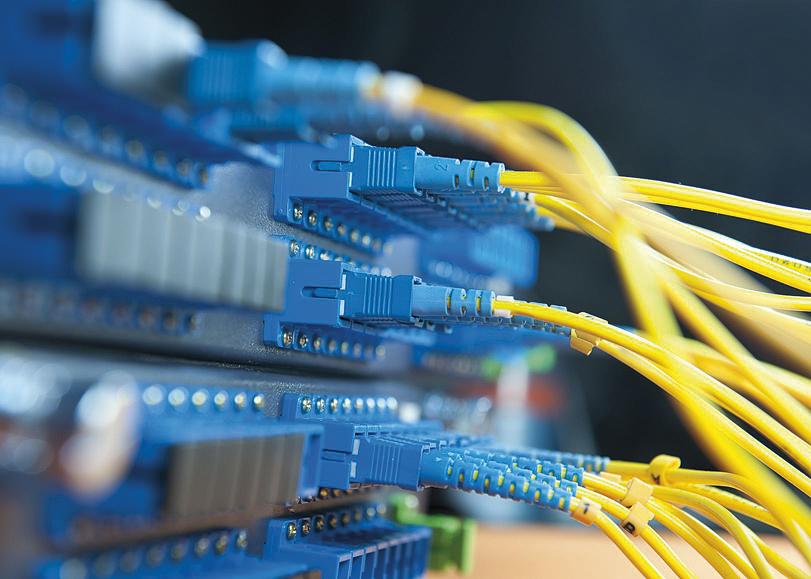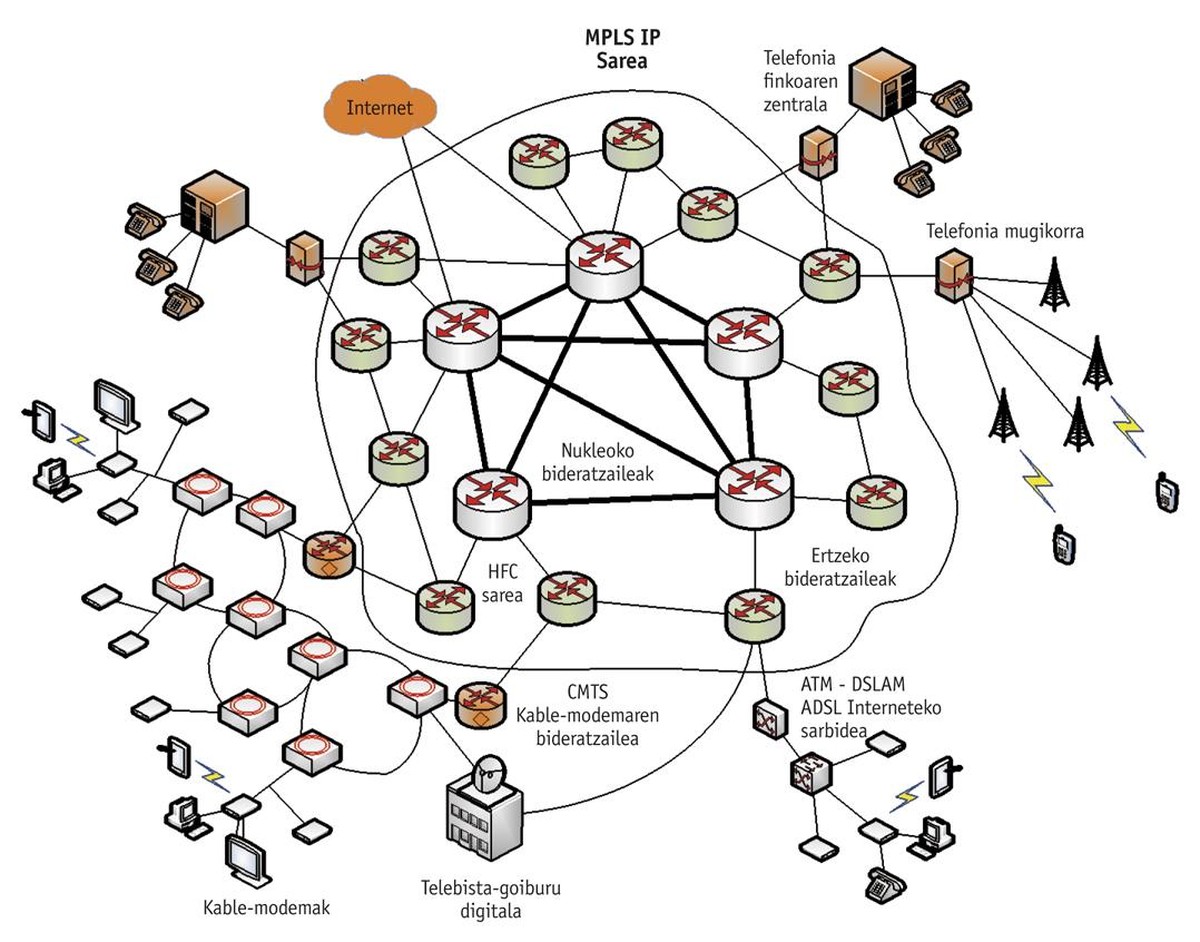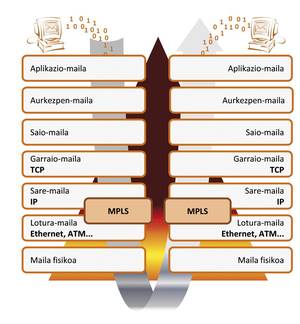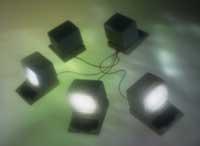MPLS technology: the telecommunications network of the future
2014/03/01 Antoñana Abalos, Inaxio - Ingeniaria Iturria: Elhuyar aldizkaria

IP networks, which began to be built in the 1970s for the exchange of information between computers, have since become large networks such as the Internet. Although at the beginning they only transported data, modern IP networks are capable of also handling voice and video calls.
The nodes of an IP network are routers or routers, using the set of TCP/IP protocols for sending information and sending control. Behind the abbreviation is the following meaning: Transport Control Protocol/ Internet Protocol, transport control protocol/Internet. The IP protocol is located at the third level --network level- of the OSI model, and the fourth level --transport level- TCP. When a node connected to the network has to send information to another node, the router organizes bits in packages – or datagramatas-. A package has two main bit sequences: valid data and header. In fact, before starting to transmit valid data, a header is also placed that serves to control the package journey through the network. The header consists of several significant bits: protocol version --> 4/> 6--, error control bits, recipient address, sender address, etc.
The extreme computer, or other device, will send a package to the first router on the network. This will analyze the datagram header to see the address of the recipient. Therefore, you will forward one or another of the links that you have connected to the next router, so that the package reaches your destination.
The router will also analyze the "error control bits" of the header and in case of detecting any errors in the transmission it will request the original computer to forward it. Sometimes packages get too fast for routers and cannot handle them: they appear jams. In these situations routers remove packages.
Datagrams usually arrive ordered to the goal, but sometimes, when performing different routes of the network, they arrive disorderly. Then the target teams must order them. On the other hand, when transmitting voice calls or videos, you can't change the order of datagrams or make forwardings.
The QoS mechanism ( Quality of Service , quality of service) is used to ensure the quality of the transmission. According to this mechanism, packages are classified in different categories: voice, video and data. Routers will look at the Qo of the package and give priority when it comes to forwarding and eliminating that particular package, voice and video packets are more priority than data packets, as images and sounds do not support delays in the transmission.
On TCP/IP levels many other protocols are used in the IP network. For anyone browsing the Internet, the following protocols are well known: HTTP, HTTPS, FTP, SMTP, POP3 and IMAP. The first two are used for Internet browsing, the third for the transport and exchange of files by Internet and the last three for e-mail.
Until a few years ago, IP networks have been used to create networks of enterprises -- local, urban and broad -- and Internet network.
In recent years, however, there is also a response to the obligation of traditional transport networks, which can create dedicated circuits to safely transport any type of traffic from one point to another: voice, data and videos. In fact, traditional IP networks have been transformed into NGN networks (Next Generation Network, next-generation network). These networks use the MPLS mechanism or technology (Multiprotocol Label Switching, multi-protocol switching), so they are also called MPLS networks. The OSI model is located between the network level and the link level. These MPLS networks use two main techniques to transport datagrams: tags and traffic class (CoS: Class of Service , the class of the service), on the one hand, in the header of the package, once the address of the recipient has been placed, a new label is added, that is, a sequence of bits, and on the other hand, depending on the quality of the service, priority is given to some packages against others to guarantee the quality of the transmission.

On this occasion, network routers will not look at the destination address of the package, but the label number. In this way, the switching of the packages becomes much faster within the router, since the computer immediately calculates the links in which the packages should be forwarded. The labels allow to create dedicated circuits. It should be noted that these circuits are not physical but virtual. These virtual dedicated circuits, at their ends, can offer Ethernet interfaces and create VLL circuits (Virtual Leased Line, virtual leased lines).
We can establish a parallelism with a logistics company to clarify this concept: on the one hand, there is a network of roads and on the other, there are independent transport lines of the company. The cargo trucks, like the information packages, make trips, one after the other until they reach the destination, creating virtual lines that are physically non-existent.
The migration of networks to the IP world generates profound changes in the field of telecommunications, becoming one of the main challenges of the coming years for telecommunications companies. Most operators are currently transforming their infrastructures to benefit from MPLS technology.
Bibliography Bibliography Bibliography

Gai honi buruzko eduki gehiago
Elhuyarrek garatutako teknologia






